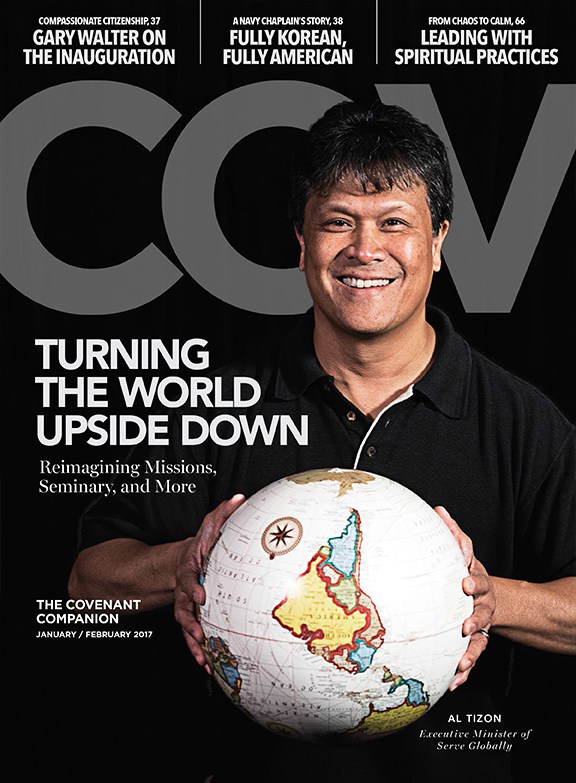CHICAGO, IL (February 28, 2014) — This month’s issue of the Covenant Companion looks at the growing trend of churches forming nonprofit organizations. This week, we are publishing stories online that look at other possible opportunities to consider when discerning how to engage in community ministry. Today, we are sharing two edited blog posts by Daniel Hill, the pastor of River City Community Covenant Church in Chicago. In this post, he share the difficulties of trying to build bridges between neighborhood “insiders” and “outsiders.” Click here to read Daniel Hill’s other post.
Pursuing reconciliation among a diverse group of people is a key dimension of River City’s ministry. It also is one of the most complex and can become all-consuming.
That is just inside the church.
But our reconciliation efforts must spill outside the church and connect to the great social challenges of our day. That is why the vision in Jeremiah 29 to “seek shalom” or in more modern terminology, “break the cycle of poverty”—becomes so critical.
Regardless of the model used for neighborhood development, there is almost always a degree of chaos that stems from a commitment to that type of ministry (or ‘service’ if it is secular). ‘Community development’ almost always presumes an under-resourced neighborhood so there are inevitably class dynamics that come with it.
Usually there is a group of “outsiders” who come to work with “insiders,” the people who are historic residents of the neighborhood, to pursue shalom. In 99 percent of the cases, the outsiders come from more material wealth and affluence, and they are trying to build bridges of redistribution with the insiders.
That is a dynamic filled with power and privilege. It has to be dealt with in a very careful and considerate way.
When it is not, you end up with situations described in best-selling books like “When Helping Hurts” and “Toxic Charity.” Needless to say, reconciliation becomes an important value in these kinds of ministries, whether it is a stated value or not.
This dynamic is as true for River City as it is for any other ministry that does community development. (We intentionally use community development and neighborhood development to distinguish between the biblical call to be a community and the actual neighborhood that we are partnering with).
Neither the insiders nor outsiders to our neighborhood are monolithic. Both are incredibly diverse within themselves.
The insiders of our neighborhood are a fascinating blend of Puerto Ricans, African Americans, and Latino American immigrants. The outsiders of our neighborhood, both in our church and the new residents who came in through a wave of gentrification on the outskirts of the neighborhood—tip towards a more young professional and urban creative crowd. While most are white, every major racial-cultural group in Chicago is represented.
The insider and outsider groups could pursue reconciliation just within their own groups and never run out of relevant material. So you can imagine what is required when they try to team up across racial, economic, cultural, and educational lines to pursue justice, shalom, and the alleviation of poverty together.
Since we started the church 10 years ago, we have used a philosophy known as Asset Based Community Development (ABCD) in working with existing neighborhood residents. It begins with the assumption that a number of local assets and strengths already exist within the neighborhood, and that outsiders must find and learn from those stakeholder people, organizations, churches, and institutions. To add spiritual language to that, it begins with the assumption that God has already been at work long before the outsiders got there. We don’t bring God; we join God.
We believe the neighborhood had important gifts to bring to us, and we hoped that over time our gifts would intermingle with theirs. Trust and time are the currency of community development. When we first started River City in 2003 we were viewed with a great deal of skepticism. The combination of being a church plant and having a white contingency during a period of concern over gentrification was enough for many to call our motives and capacity into question.
But over time trust was built as we asked questions, listened authentically, and worked alongside others.
For instance, New Life Covenant Assemblies of God, led by Pastor Wilfredo De Jesús, had never rented their mother church to another congregation before allowing us to lease it. They told us that one of the big reasons they had never rented to anyone was that they had built up a 40-year history around the corner of Wabansia and Mozart, and wanted to steward their reputation. They changed their policy when they came to believe in us, and we’ve sent done projects together.
We also have developed a strong and crucial relationship with Cameron Elementary over six years despite initial skepticism. The principal recently spoke at the church on a Sunday to share how he envisions our long-term partnership playing out.
We’ve also been intentional in working with the people moving into the neighborhood. The diversity of life experience and culture within River City is so broad, it often feels elusive to describe this group. However, most of the congregants over the first decade have lived outside Humboldt Park or have resided in the neighborhood for five years or less.
To some degree a large percentage of the congregation shares the trait of being outsiders—at least in the sense of their connection to the Humboldt Park neighborhood. Ultimately, though, the dream is that through hard work and the power of the Spirit of God we are all able to leave behind language that isolates and separates, and instead simply use the word “us.”
But we also understand that we don’t get there through just well wishes or singing “Kumbaya” together. So we will continue to learn, pray, and dialogue.
Categories:
News
Comments